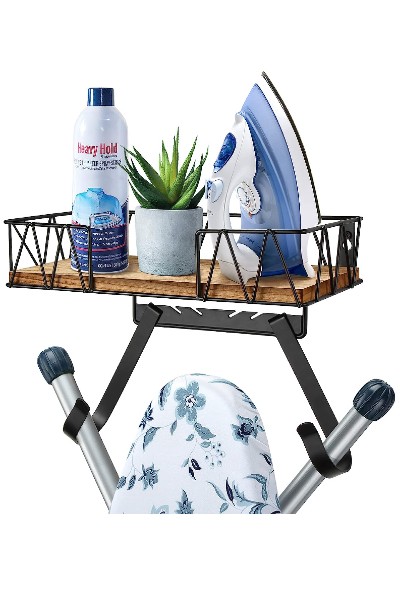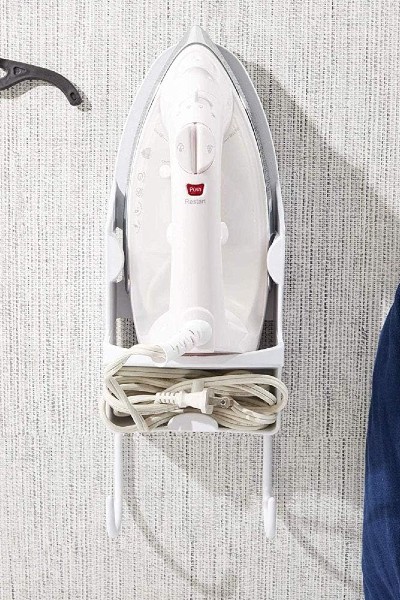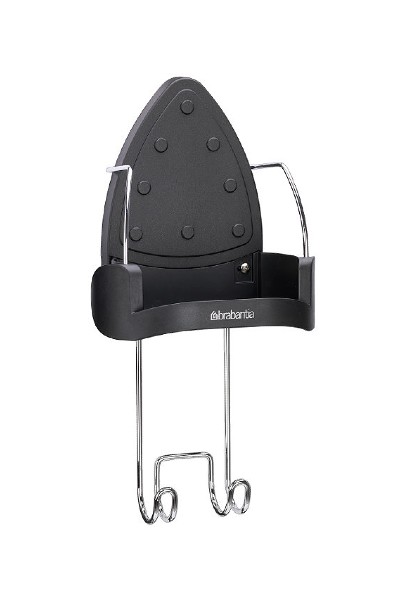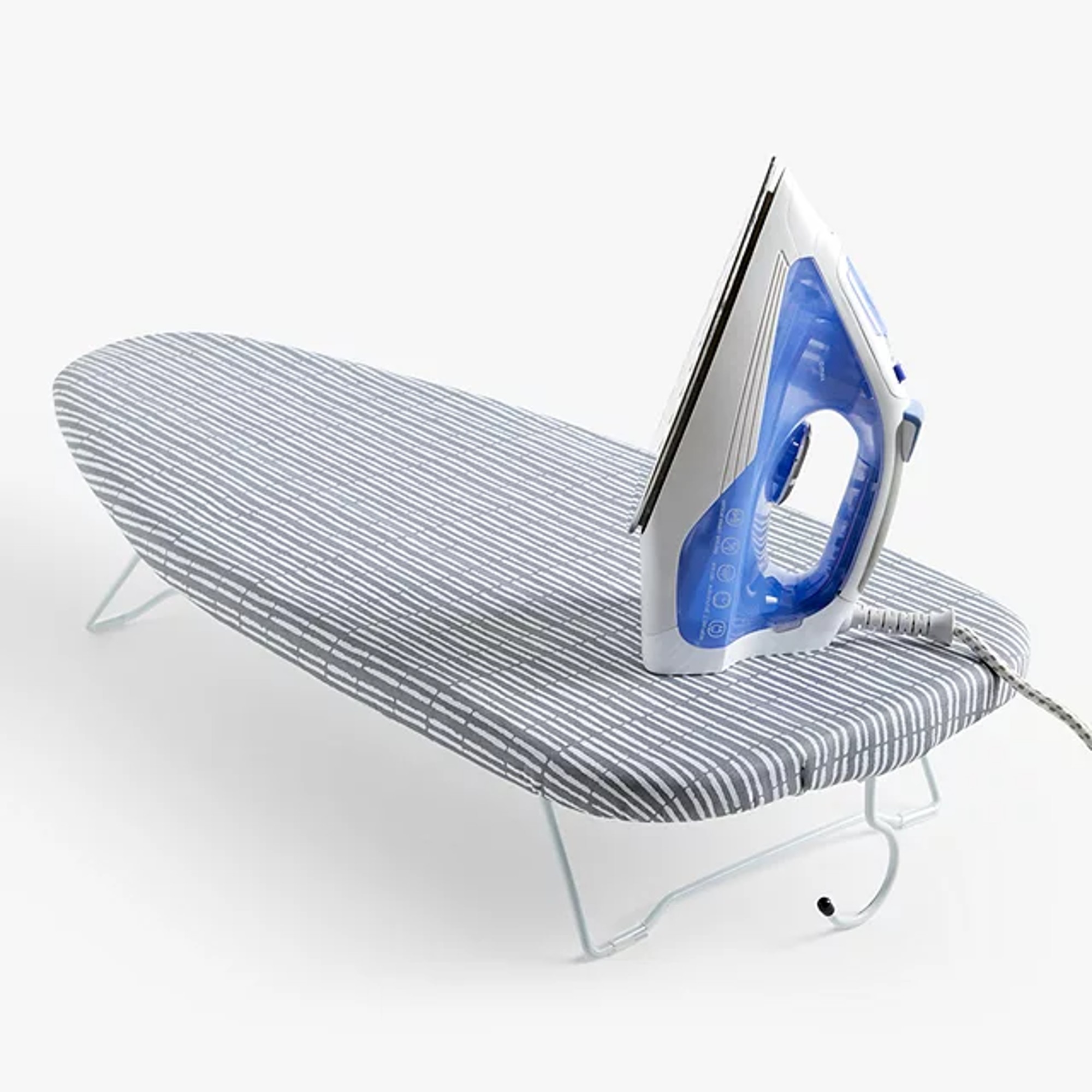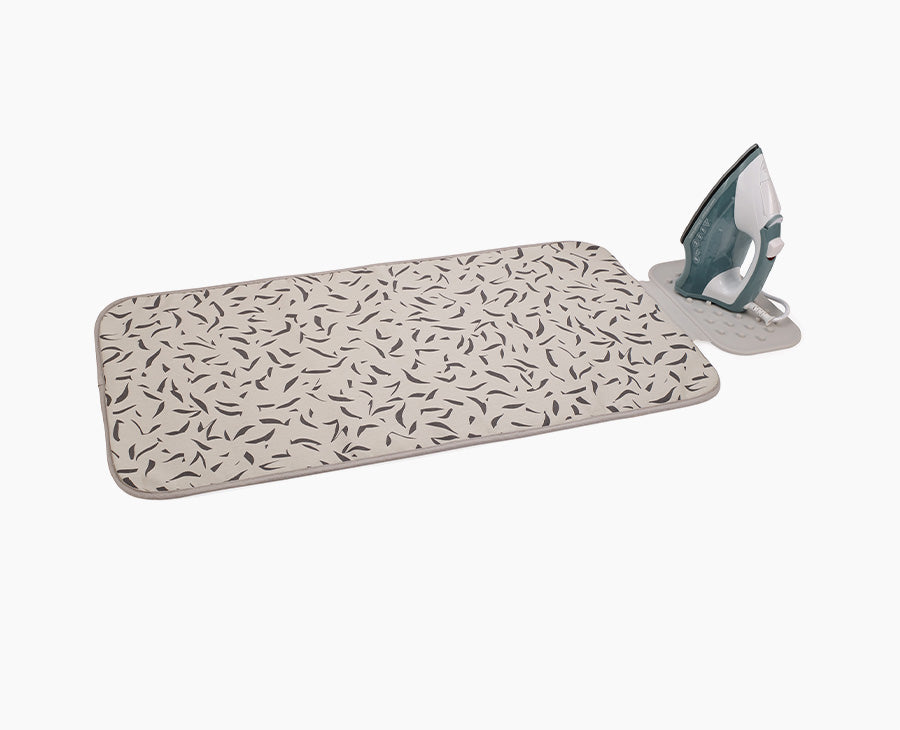Experts share 5 ironing board storage ideas to keep it out of sight and keep your home clutter-free
These ironing board storage ideas that will keep it out of the way when not in use

Jenny McFarlane
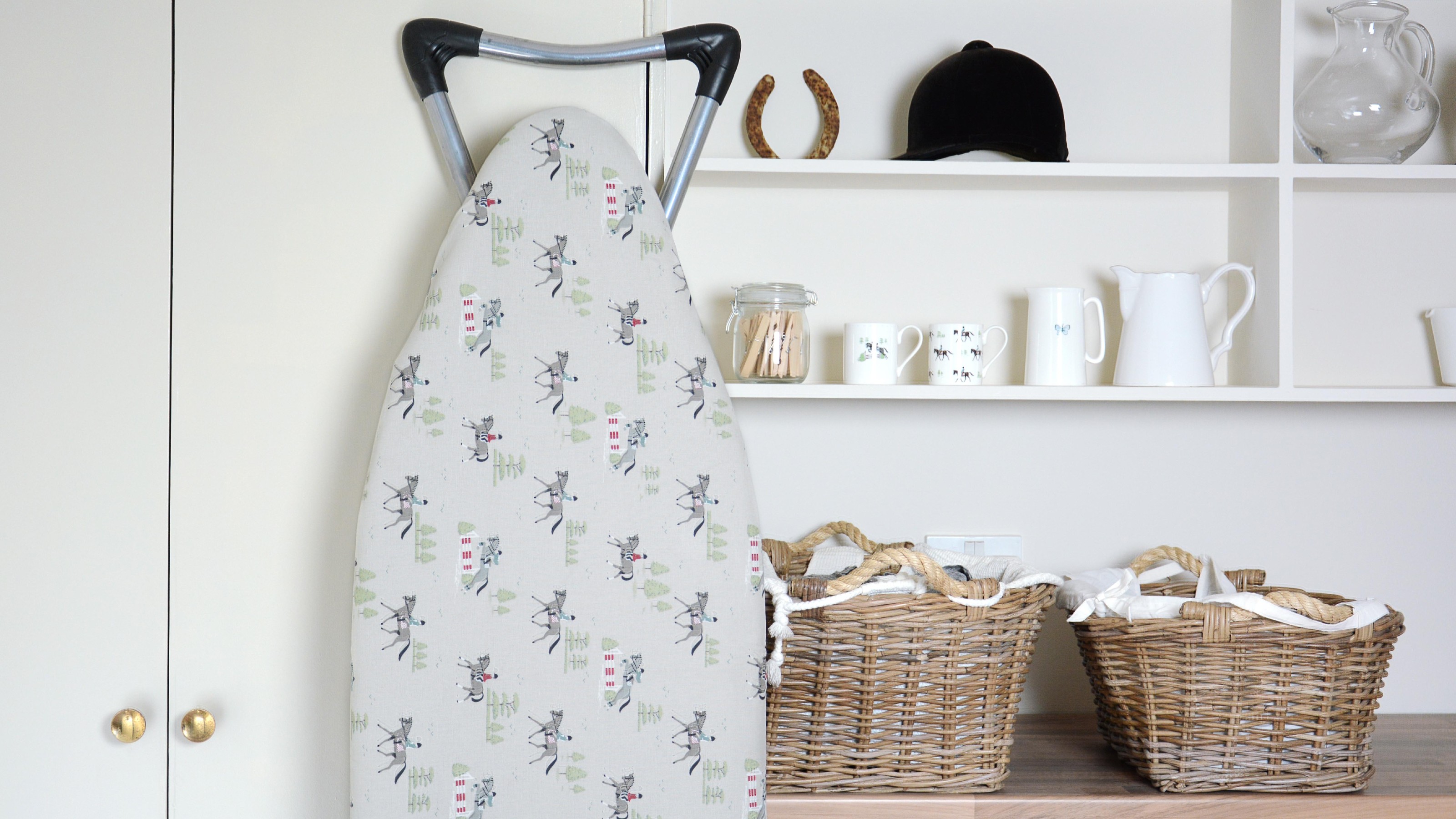
Figuring out the best way to store an ironing board is not an easy feat. Especially since most traditional ironing boards tend to be quite large and heavy. But they’re not very nice to look at either, so coming up with some clever ironing board storage ideas to hide one is essential.
Even some of the best ironing boards are awkwardly in the way. They're too tall for a standard cupboard (especially if you don't have a utility room) and pretty unsightly to leave on show. But with a little clever thinking and some advice from organising pros, we've gathered intel on getting the best and most practical spot to tuck it neatly out of sight without sacrificing convenience.
We asked the experts, and they came back with 3 game-changing tips to make your life a lot easier, keep your storage cupboard tidy, and free up your walkways.

5 ironing board storage ideas
Before deciding on how to store your ironing board, it’s worth asking yourself how often you actually use it and going from there, according to Siân Pelleschi, founder of Sorted! and APDO president.
‘When it comes to storage of these large items, it’s worth asking yourself this: realistically, how often do you iron? Are you an ironing fanatic where it takes pride of place in your living room, or someone who only gets it out to iron something for an interview, funeral or wedding?'
'Either way, if you understand the needs for your ironing board, you can then start to work out where it might need to live and the best storage solution for it. Generally, keeping them out of the way and ideally out of sight when not in use is the best solution.’
And these are the 5 ways to do that best.
Sign up to our newsletter for style inspiration, real homes, project and garden advice and shopping know-how

Siân Pelleschi is the owner of Sorted!, a Cheshire-based home and office decluttering and organising service, and the current President of APDO - the Association of Professional Declutterers and Organisers. With Sorted!, she aims to take away the stress and hassle that everyday life can sometimes bring, both in your home and working environment.
1. Hang your ironing board
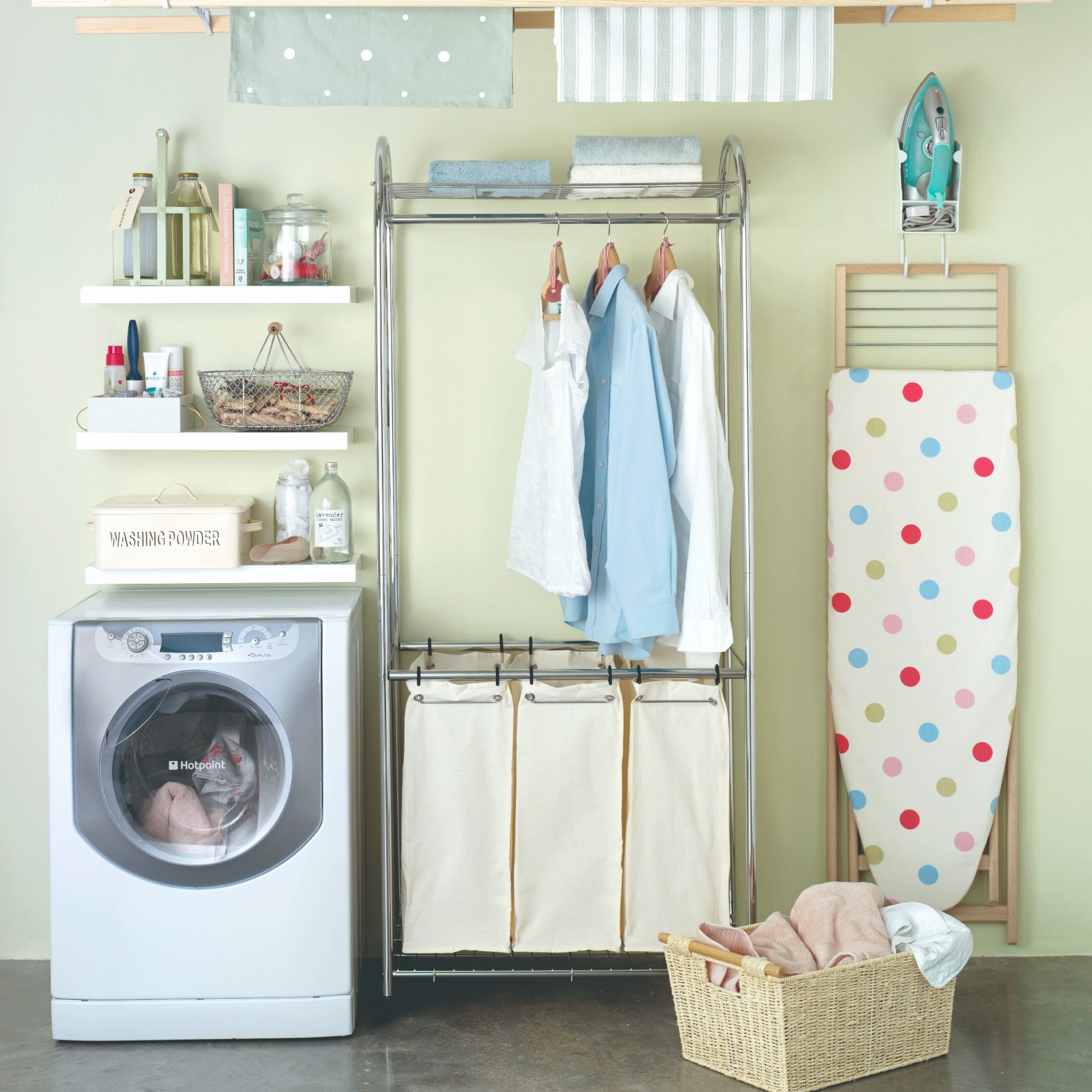
Utilising wall or door space to hang your ironing board and keep it off the floor is one of the best ways to store it, whether that’s in a cupboard, a utility room or your kitchen. And a set of hooks with an incorporated shelf for your best steam iron is the easiest way to achieve this.
‘Think about a durable hook or combinations featuring hooks for the board and a shelf for the iron,’ says Simon Glanville, managing director of A Place for Everything. ‘Even if you do have a utility room, then thinking vertically and making use of the wall or the back of a door can really make the space work for you. If you’re able to create the look and feel of a tidy space while keeping everything accessible, then job done!’
2. Keep it close to where you need it
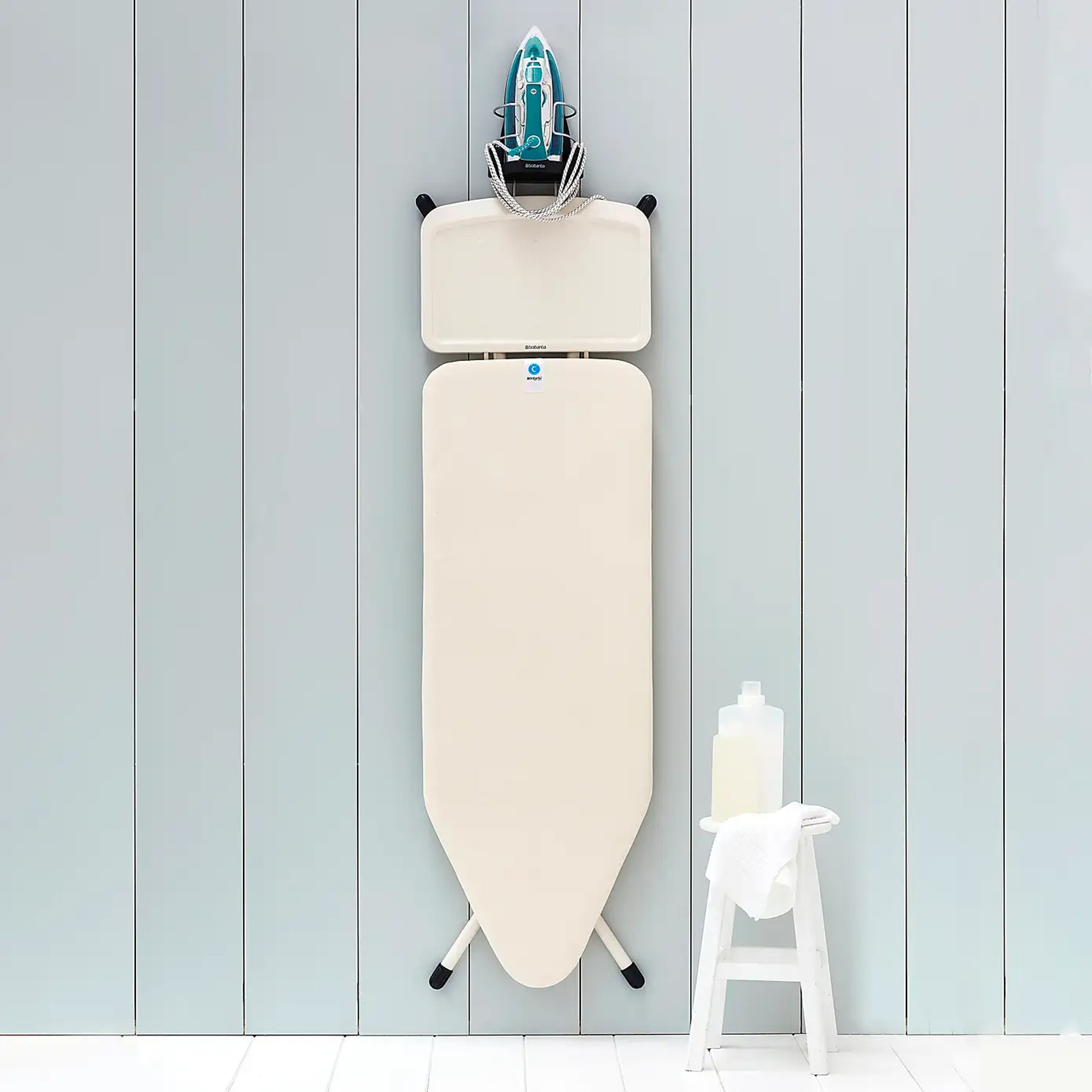
We said it before, and we’ll say it again, these tips are designed to make your life easier. And while this one might seem obvious, you’d be surprised how many people keep their ironing board in a different area of their house from the one they need to use it in.
‘Actually, having an ironing board and iron in an area you would use it is best,’ Siân advises. ‘In my house, we only iron the odd shirt for my husband, and that tends to be the night before he’s due to wear it. So for us, having the iron and ironing board in a bedroom near where he’ll be dressing and where the wardrobe is, is essential and saves him time and energy having to transport the shirt to a different part of the house. Our board and iron are tucked away behind a wardrobe and on a closed shelf with easy access but out of sight.’
So don’t make your life more complicated by putting your board in an area of the house that’s difficult to access or far from the room you need it in.
3. Swap your board for a smaller, space-saving option
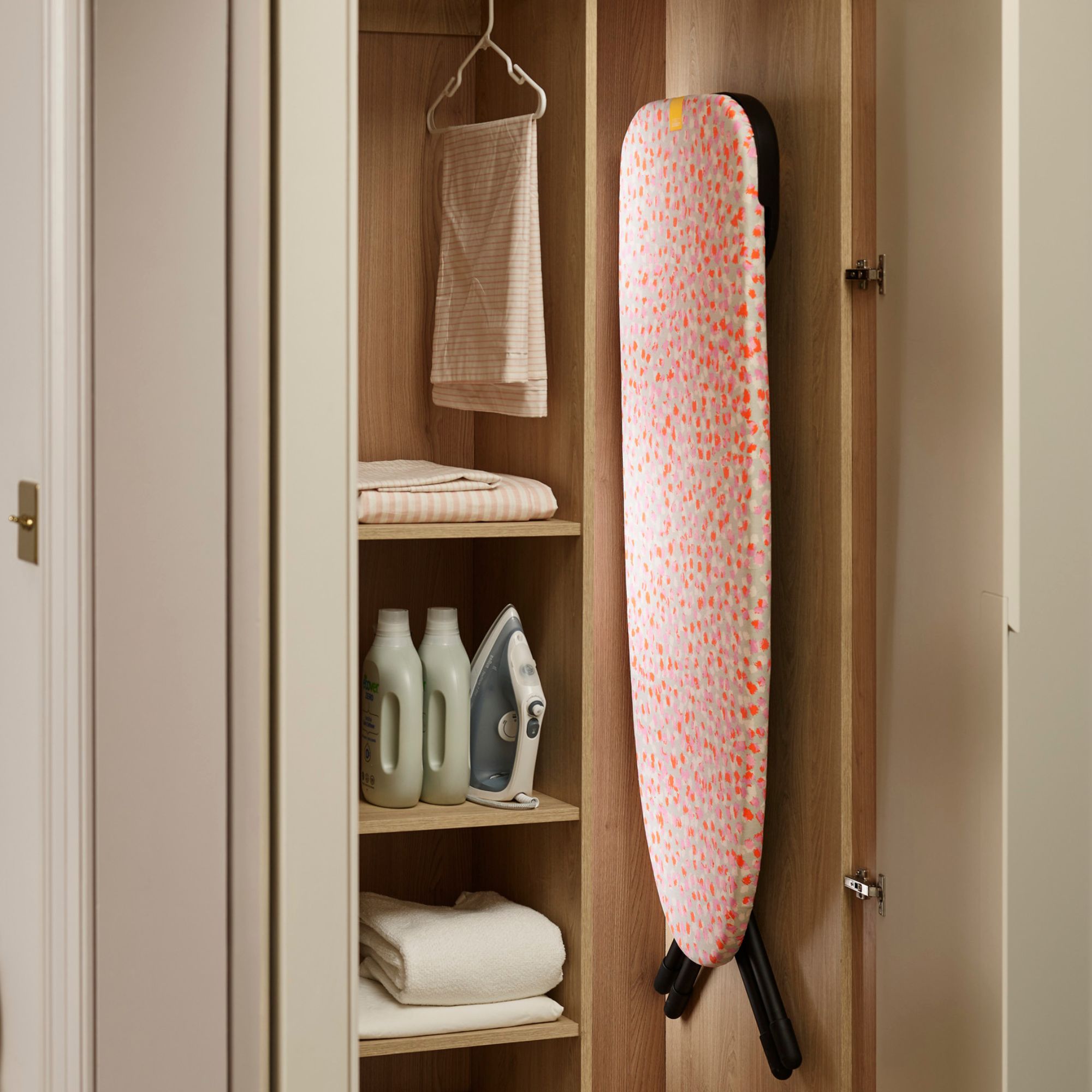
If you’re not working with a lot of space, then investing in a board that doesn’t take up too much space might be the best decision you could make.
‘If you’re struggling for space to house the ironing board, consider getting a smaller one. More often than not, people buy the biggest board they can get, thinking it’s the best option, but if you can’t find a suitable home for it whilst not in use, it then becomes cumbersome to keep,’ Siân says.
And if space is really tight in your home, storage expert Vlatka Lake from Space Station recommends a portable ironing board. 'They are a great alternative to the traditional ironing board, as they pack down smaller and can be carried around more easily,' explains Vlatka. 'They can be used pretty much anywhere in the home, from your kitchen worktops to your coffee table.'
4. Slide it next to appliances
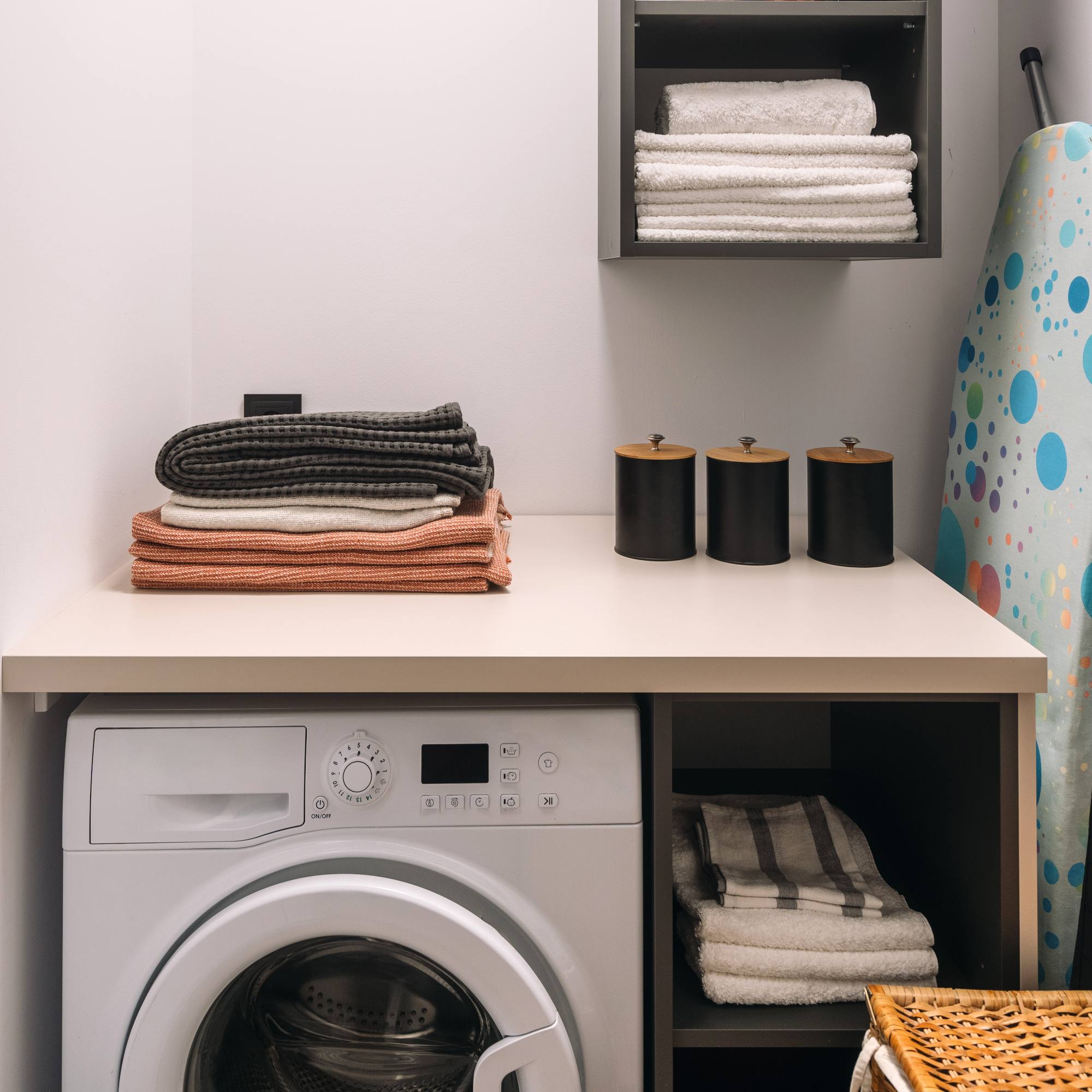
Vlatka also recommends storing your ironing board beside your washing machine, behind cupboards, or even under a chest of drawers.
She explains that because ironing boards are so slim and lightweight, they’re easy to slide into these tight spaces, keeping them out of the way while still easily accessible when you need to quickly press a shirt or tackle a mountain of laundry.

Vlatka Lake is the storage expert at Space Station, where she brings a wealth of experience. Her hands-on experience gave her deep insights into customer pain points, which she then carried forward into Space Station’s strategy.
Vlatka works to ensure the company’s services are not only helpful but also provide a supportive and friendly environment for customers.
5. Keep it in your wardrobe
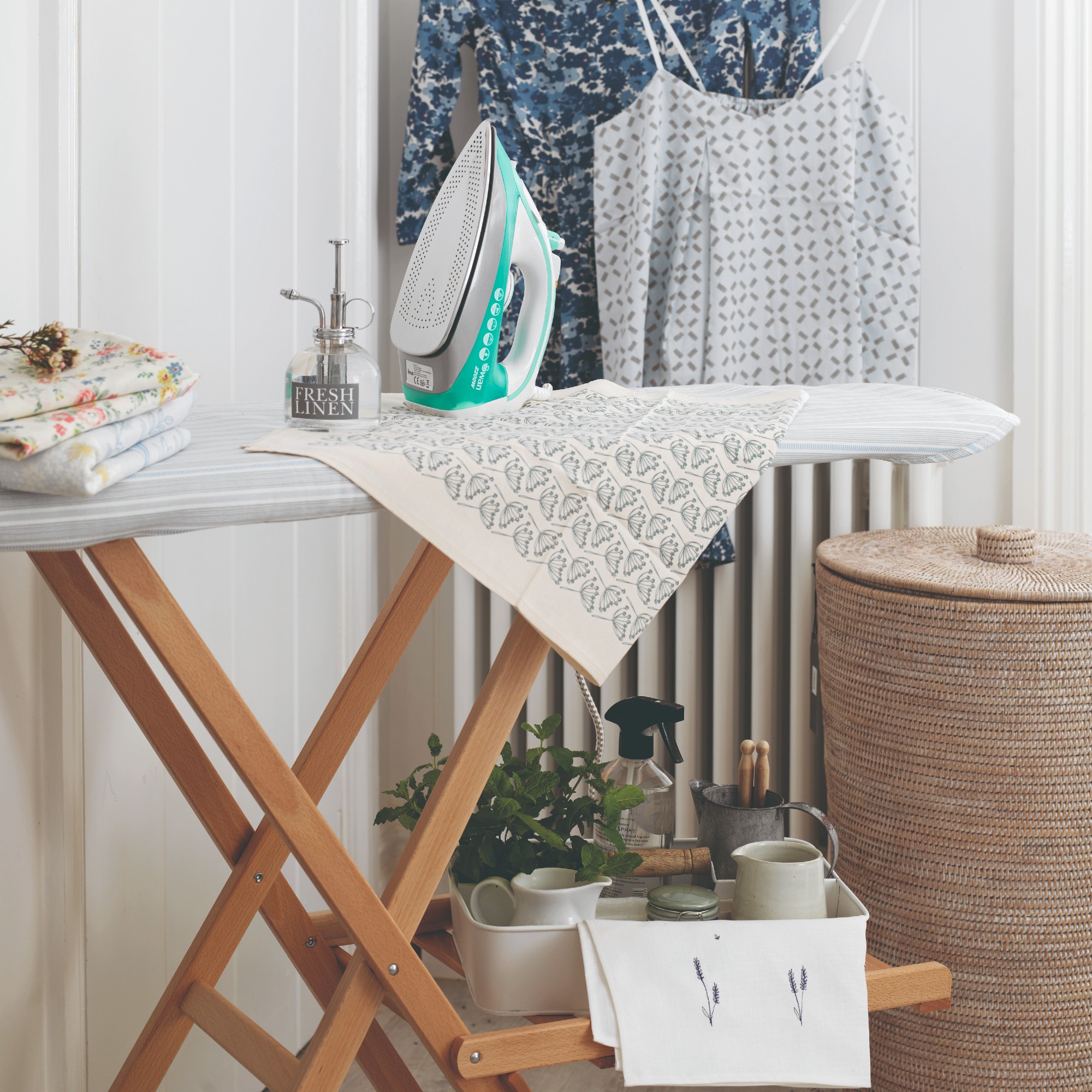
Keeping an ironing board in a wardrobe, as Vlatka explains, is an incredibly practical move to keep it close to the clothes you’ll be pressing, and it means you’re more likely to actually use it.
Plus, it’s a game-changer for keeping the ironing board out of sight and your bedroom looking tidy. Vlatka’s top tip? Position it in an easy-access wardrobe with enough room so you can easily whip it out and fold it away.
Shop space-saving ironing boards
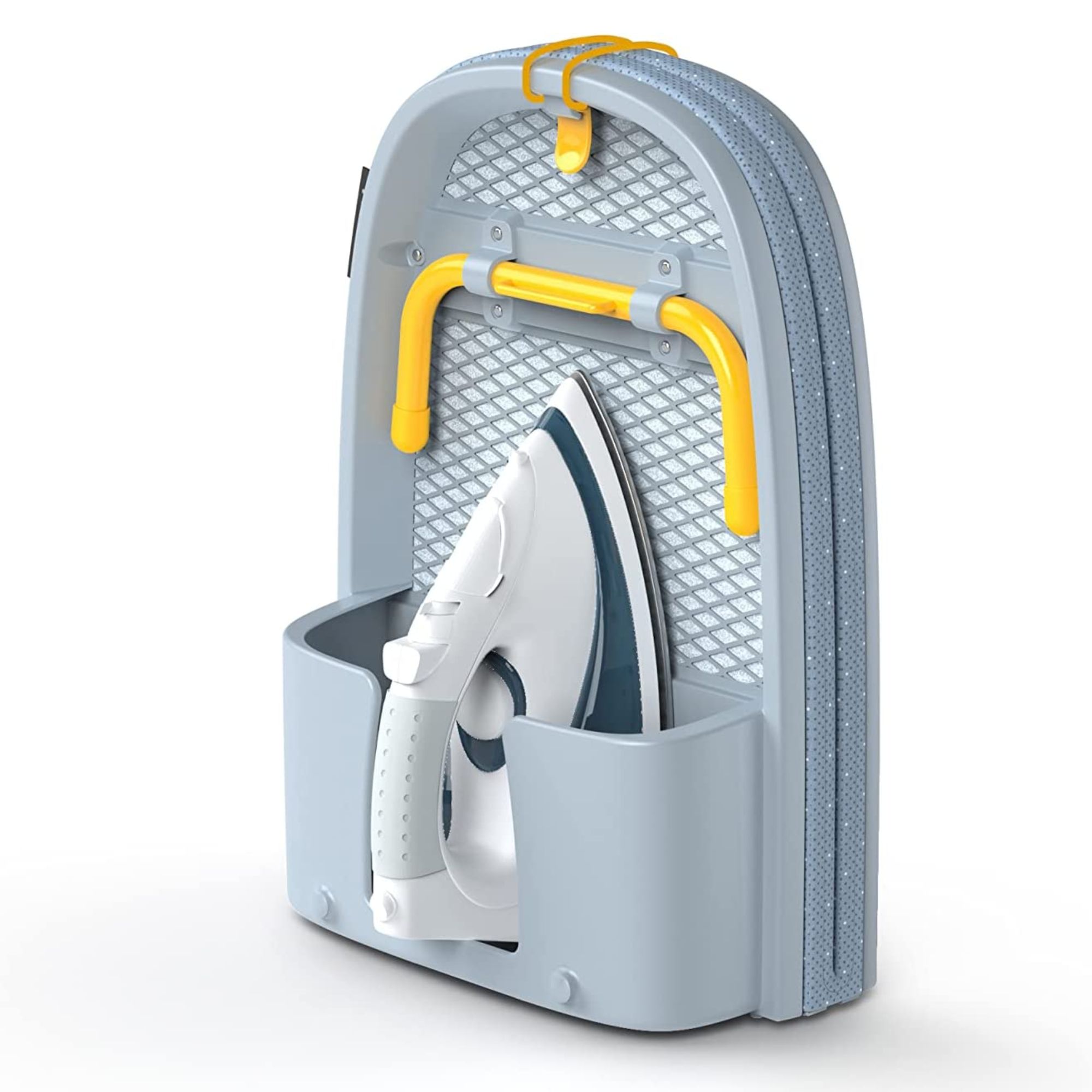
FAQs
Where can I hide my ironing board?
The best way to hide an ironing board is either by storing it in a utility cupboard, ideally hung on some hooks and lifted off the ground, or using nooks and crannies that keep the board within reach but out of sight, for example next to a wardrobe if you have that kind of space.
What is the best way to hang an ironing board?
As previously mentioned, hanging your ironing board on some sturdy hooks is one of the best ways to store it. But pick your hooks wisely and be careful when hanging your board.
‘With the hook, make sure the ironing board is clamped shut so it doesn’t fall open and of course that the hooks are durable enough to hold the weight,’ Simon warns.
Siân adds, ‘You can hang them either on the back of a door or unit.’
‘At the end of the day, whether you iron every day or just once a year, if you’re going to have an ironing board in the house, make sure it’s easy to access, close to where it’s required and not blocking walkways,’ Siân concludes.
So there you have it, five ironing board storage ideas that will hide your board and keep things looking neat. In what way do you store your ironing board? Let us know in the comments!

Sara Hesikova has been a Content Editor at Ideal Home since June 2024, starting at the title as a News Writer in July 2023. She is now also the Ideal Home Certified Expert in Training on Furniture, and so far has tested over 150 different sofas.
Graduating from London College of Fashion with a bachelor’s degree in fashion journalism in 2016, she got her start in niche fashion and lifestyle magazines like Glass and Alvar as a writer and editor before making the leap into interiors, working with the likes of 91 Magazine and copywriting for luxury bed linen brand Yves Delorme among others.
- Jenny McFarlaneSenior Digital Editor
